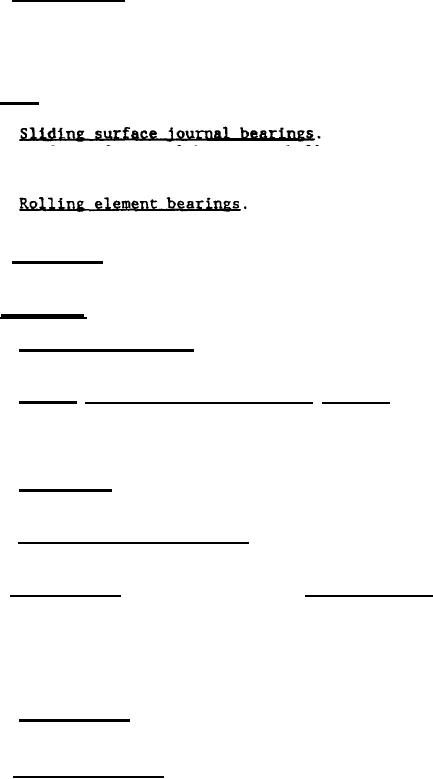 |
|||
|
|
|||
| ||||||||||
|
|  MIL-C-18087A(SH)
3.4.3.2 Clutch hubs. Wall thickness of clutch hubs shall be sufficient to
prevent cracking or fracture under shrink fit, torque, bending moment, and
centrifugal and other loading imposed during normal operation of the clutch. Wall
thicknesses shall also allow for the effects of keyways, splines, holes, or other
features that introduce stress concentrations.
3.4.4 Bearings.
Unless otherwise specified (see
3.4.4.1
6.2), sliding surface of journal bearings shall be lined with the anti-friction
materials specified in table I (see 3.2).
3.4.4.2
Bearings shall be in accordance with
table I.
3.4.5 Lubrication. Unless otherwise specified (see 6.2), lubricant shall be
supplied to the clutch from the associated equipment.
3.4.6
Fasteners.
3.4.6.1 Bolting for casings.
Fasteners for casings shall be in accordance
with table II (see 3.2).
3.4.6.2 Bolting for rotating and stationary parts. Fasteners for all
rotating and stationary parts shall be in accordance with table II and shall
conform to grade 5 or better of MIL-S-1222 (see 3.2). All fasteners shall be
locked in accordance with MIL-N-25027 and MIL-F-18240.
3,4.6.3 Bolt holes. When clutches are nitrided or carburized, bolt hole and
adjacent areas shall not be case hardened to permit reaming at assembly.
3.4.6.4 Fasteners. weight balance. Clutch bolts, nuts, and cap screws shall
be weight balanced to values given below:
Balance, grams
Speed, r/min
o to
1000
plus
or
minus
1.0
1000 to
2000
plus
or
minus
0.5
2000 to
3600
plus
or
minus
0.2
over
3600
plus
or
minus
0.1
3.4.6.5 Fastener sets.
Bolts shall be furnished as sets or sized for their
respective holes and marked.
3.4.6.6 Fastener torque. Installation torque limits and thread lubricant
requirements shall be established by the clutch contractor. The lower limit
of installation torque shall be sufficient to prevent joint separation under the
normal operating loads and, when required (see 3.4.9), under shock. Where not
otherwise specified:
(a) Combined stress in the fastener threads under the upper limit of
installation torque shall not exceed 75 percent of yield strength
of the bolt material.
15
|
|
Privacy Statement - Press Release - Copyright Information. - Contact Us |